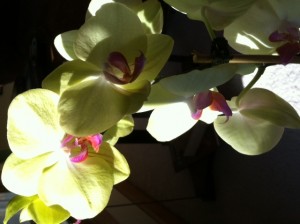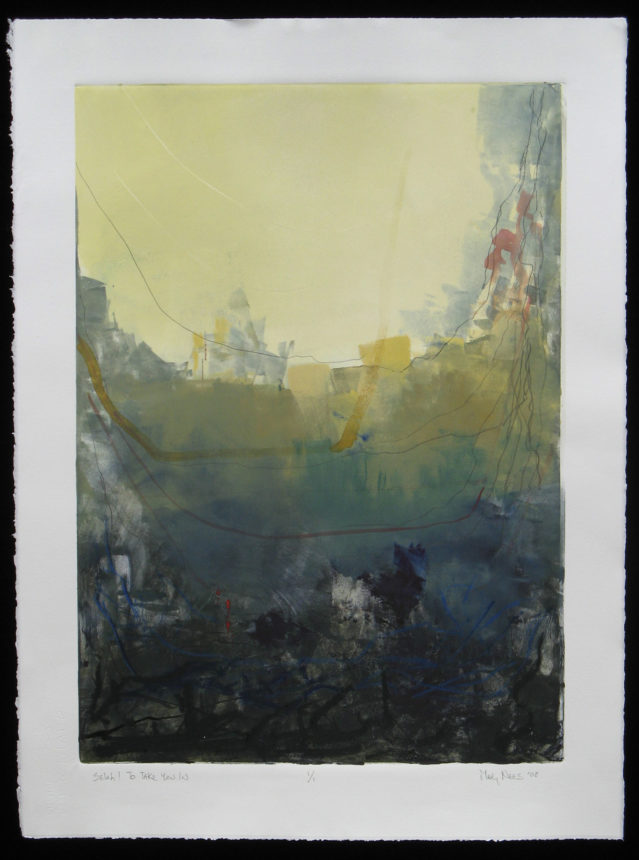In early morning dark, I was driving my friend to a hospital in another city. We’d been given some pretty clear directions and told it was simple, so off we went. Toward the end of our journey, our eyes focused for the landmarks (in the disruption, neither of us had our “devices”). Ok, we passed the Walgreens where we turn. Ok, we’re supposed to go over this bridge. Ok. . . so where is the next turn, did we miss it? We both leaned forward in our seats, the car ambling forward into the dim. Another couple blocks and we saw a blue hospital sign, then down a hill, around a corner and it felt like maybe we were approaching the right vicinity. Soon: lights, cameras, action.
On the way out, hours later, we retraced our route to get back to the interstate. This part is why I am telling the story: the time to travel out was eons shorter than that long and ponderous earlier drive! How could this be? It was the same exact path of streets we took coming in. But our experience of time was completely different in the reverse direction. We both were startled by this and it got me thinking.
Time seems to be an elastic thing, even as it ticks with a measurable rhythm. Sometimes as I lie in bed at night, I can feel and hear in my ears the beat of my own heart in a predictable rhythm that is beyond my control: pump. pump. pump. I can manipulate some variance in the count of those beats: get excited and they move faster, focus on relaxing and they settle down, but I cannot stop the beats, nor do I want to. Time moves like this in a set program; I cannot ultimately change it’s progress or it’s pace. As I move through time however some things feel quick and some things feel terribly, terribly slow. Certainly the moments looking for the hospital as we examined every sign and longed for every turn were experienced by us as LONG. But on the way out, hearts lifted, day shining and mission accomplished—the entrance to the interstate was so quick it was entirely startling.
Here’s why this informs me: I am awaiting the arrival of Jesus, as He promised. I am moving along looking for His signs. He said the way was simple and just ahead. But it is dim out there where I am traveling now. I will keep going forward. His way is sure. It’s the time thing that has me at the edge of my seat.
So, is it my experience in time, awaiting His arrival that makes it seem LONG? Is it the heartstopping events that make the pace seem to stagger, and the exciting parts make it seem to speed up? This much is clear: time may be subjectively experienced, yet it remains a measured finite resource that moves in one direction only. This video I shot was on a blustery afternoon, also just recently. The movement here reminds me of a phrase in a poem by Susan Morrison, (age 11) “Hours are leaves of life, and I am their gardener, each hour falls down slow.”
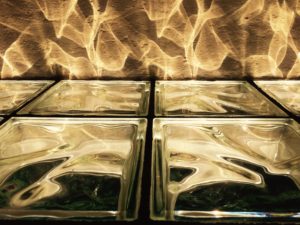 Amid the noisy machines, flashing tv screens and the running track, there is a window at my fitness center. It is a glass block section that scatters light into the space where we work. Everyone inside has an individual training plan going on. There’s sweat, determined looks, clocks, and all around the sounds of metal clanking. I was tromping along with my earbuds locked into a current-events podcast when I got stopped by this view. This was greater news.
Amid the noisy machines, flashing tv screens and the running track, there is a window at my fitness center. It is a glass block section that scatters light into the space where we work. Everyone inside has an individual training plan going on. There’s sweat, determined looks, clocks, and all around the sounds of metal clanking. I was tromping along with my earbuds locked into a current-events podcast when I got stopped by this view. This was greater news.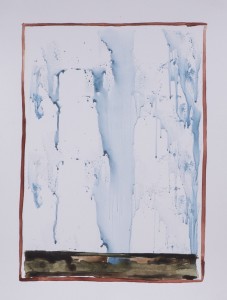 The first image, that of evil, called Abaddon, is dominant and encroaching, seemingly boundless and fearful. The second image is much quieter, gentle but life-giving, boundaried but free. It penetrates the ground rather than taking it over. And it is rimmed by this mysteriously fragile red enclosure. When I made this second image it was after studying some illuminated manuscripts from a book a friend had given me. The first image, as I wrote earlier, took over when I made it, surprised me, troubled me. But it seemed necessary to consider. This second image was planned more carefully, but its making also involved some serendipity. I used a brayer to lay down the veils of blue watercolor, loving the delicate surprise in the markings that resulted, and that were still “in character” with the quiet beauty of good.
The first image, that of evil, called Abaddon, is dominant and encroaching, seemingly boundless and fearful. The second image is much quieter, gentle but life-giving, boundaried but free. It penetrates the ground rather than taking it over. And it is rimmed by this mysteriously fragile red enclosure. When I made this second image it was after studying some illuminated manuscripts from a book a friend had given me. The first image, as I wrote earlier, took over when I made it, surprised me, troubled me. But it seemed necessary to consider. This second image was planned more carefully, but its making also involved some serendipity. I used a brayer to lay down the veils of blue watercolor, loving the delicate surprise in the markings that resulted, and that were still “in character” with the quiet beauty of good.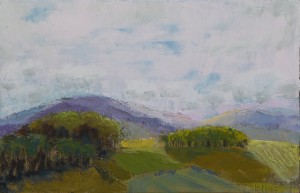 This is where I get to live! My husband and I still revel in such a place to be. He loves the quiet the most. I love the long views. I grew up in flat lands. I was always looking out the windows though, searching, even as a child for something (I knew not what to even call it). I just remember the ache and the longing. And I especially was enchanted by the lines that seemed to point to horizons. Now my horizons are much more enchanting, irregular, changing, suggesting deeper promise.
This is where I get to live! My husband and I still revel in such a place to be. He loves the quiet the most. I love the long views. I grew up in flat lands. I was always looking out the windows though, searching, even as a child for something (I knew not what to even call it). I just remember the ache and the longing. And I especially was enchanted by the lines that seemed to point to horizons. Now my horizons are much more enchanting, irregular, changing, suggesting deeper promise.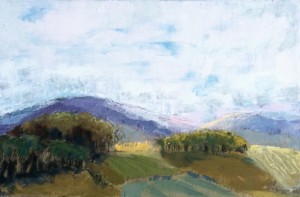 I have been enchanted by the big overlook for a long, long time; am coming to see reasons why in ways that are deeply satisfying and spiritually stretching. I remember a lecture I heard over 40 years ago about the Hebrew prophet Isaiah. He was a visionary who was given vistas to verbalize that were greater than he felt he could capture. He was a big picture guy. His words skip over the peaks of time, they run ahead, then linger back with comfort, and other times with terrible disruption. Time conflates in Isaiah’s visions. Assurances are way, way beyond him but he sees it! He scribes what he is given with his own unique voice.
I have been enchanted by the big overlook for a long, long time; am coming to see reasons why in ways that are deeply satisfying and spiritually stretching. I remember a lecture I heard over 40 years ago about the Hebrew prophet Isaiah. He was a visionary who was given vistas to verbalize that were greater than he felt he could capture. He was a big picture guy. His words skip over the peaks of time, they run ahead, then linger back with comfort, and other times with terrible disruption. Time conflates in Isaiah’s visions. Assurances are way, way beyond him but he sees it! He scribes what he is given with his own unique voice.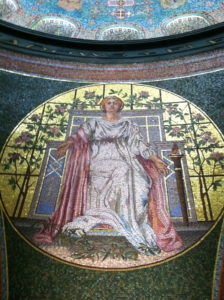 This is not empty wishing; it is solid unseen trust.
This is not empty wishing; it is solid unseen trust.